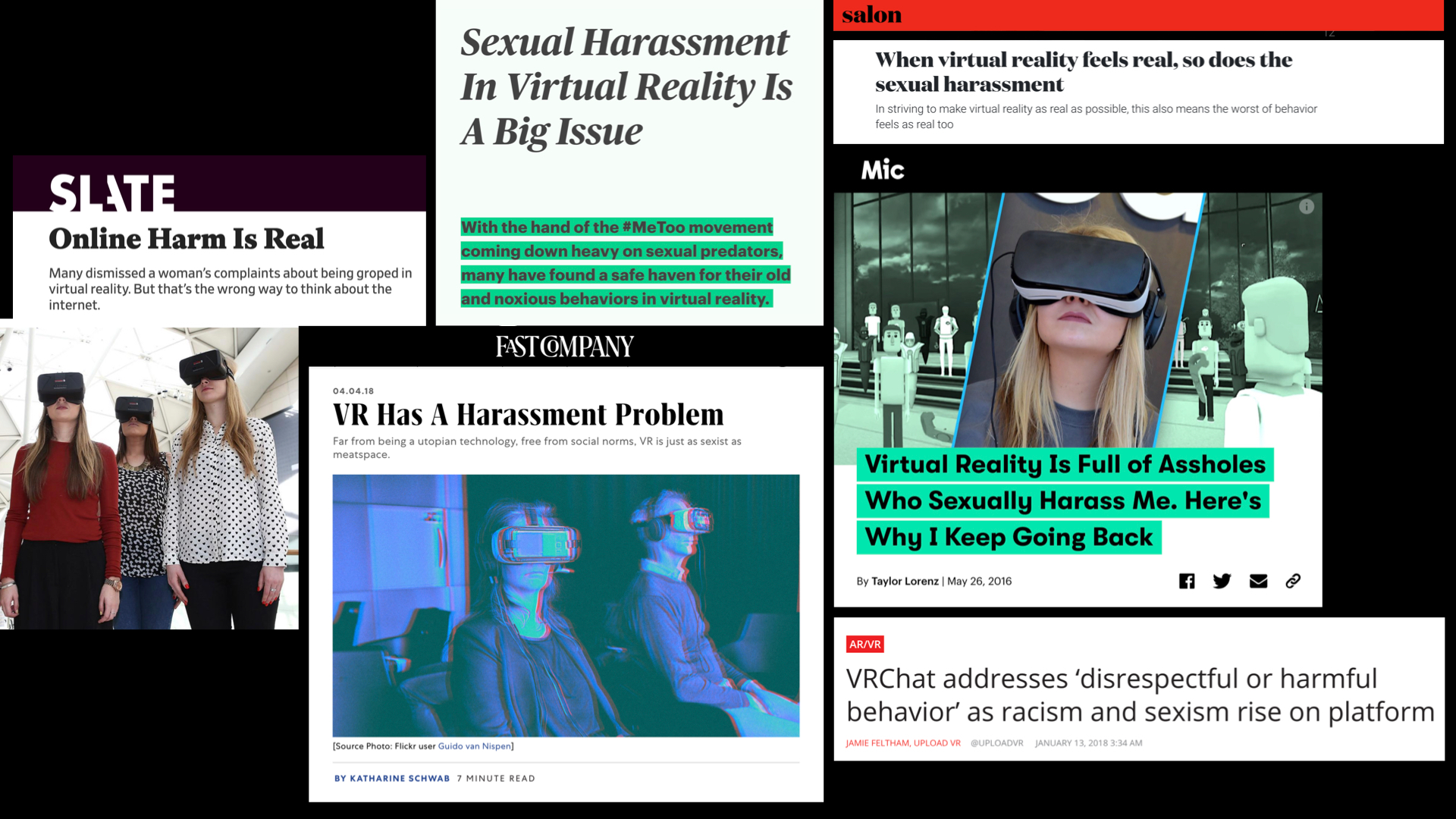Community, Leadership, Experimentation, Diversity, & Education
Pittsburgh Arts, Regional Theatre, New Work, Producing, Copyright, Labor Unions,
New Products, Coping Skills, J-O-Bs...
Theatre industry news, University & School of Drama Announcements, plus occasional course support for
Carnegie Mellon School of Drama Faculty, Staff, Students, and Alumni.
CMU School of Drama
Tuesday, November 05, 2019
Designing Safer Social VR
Immerse: Imagine it’s your first time entering a social virtual reality experience. You quickly set up an avatar, choosing feminine characteristics because you identify as female. You choose an outfit that seems appropriate, and when you’re done, you spawn into a space. You have no idea where you are or who is around you. As you’re getting your sea legs in this new environment, all the other avatars look at you and notice that you’re different. Strange avatars quickly approach you, asking inappropriate questions about your real-life body; touching and kissing you without your consent. You try blocking them, but you don’t know how. You remove your headset fearing that you don’t belong in this community.
Subscribe to:
Post Comments (Atom)

1 comment:
This article is a really interesting as I have never really thought about social interactions in VR. I am not a big VR user. Most VR experience I have had are VR rides. I have never really interacted in a social VR experience with other users. That being said, I find the idea that women are not safe even in VR from harassment to be sad and reflective of our times. VR is very complicated to use when first presented with it, and I know that being harassed by other users the minute I come online would exaggerate my stress in attempting to figure out the controls. I think the article is a great way to start the conversation with developers and designers about how to create easy to access controls to prevent harassment or unwanted social interactions in VR. I also think that the article does a really good job of defining the 4 types of spaces for a person, and how they propose to address them in VR in order to make it more socially safe for females. I love that female designers for VR are taking a stand against the harassment and are proposing new ways to think about social interaction in a virtual space.
Post a Comment